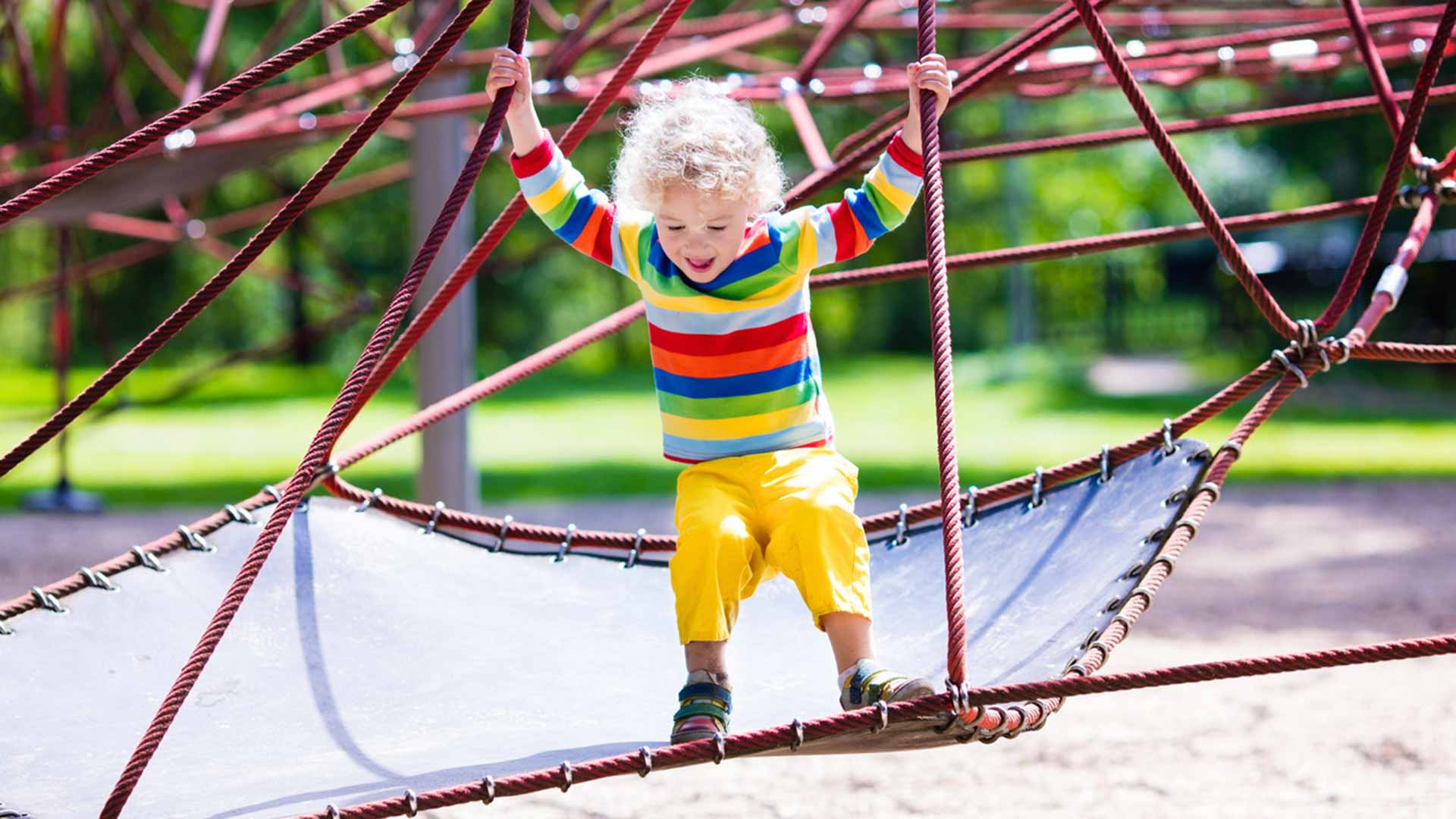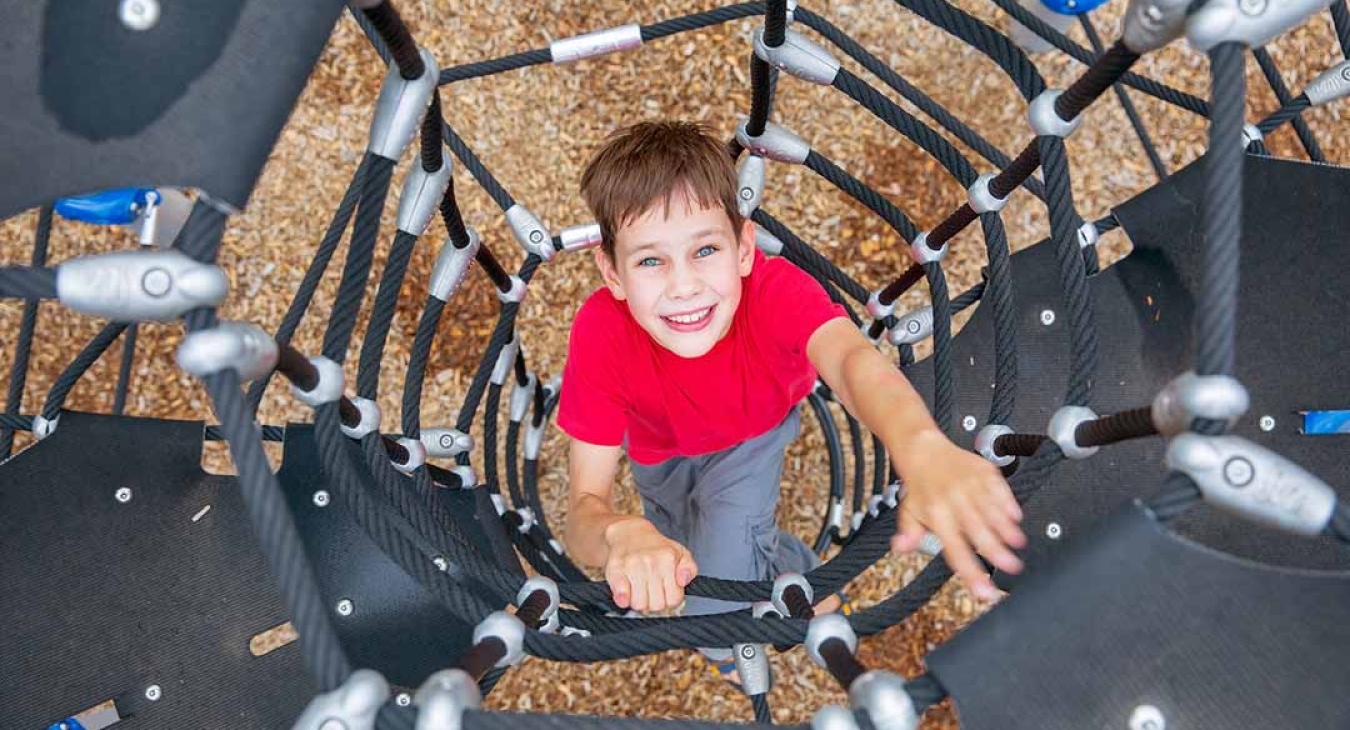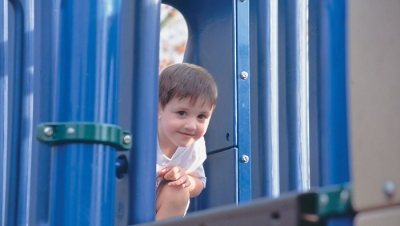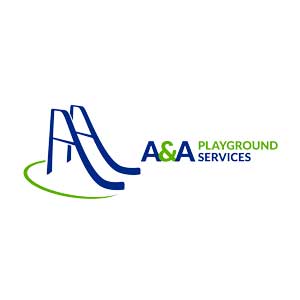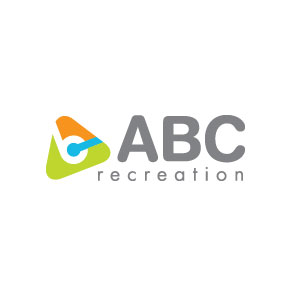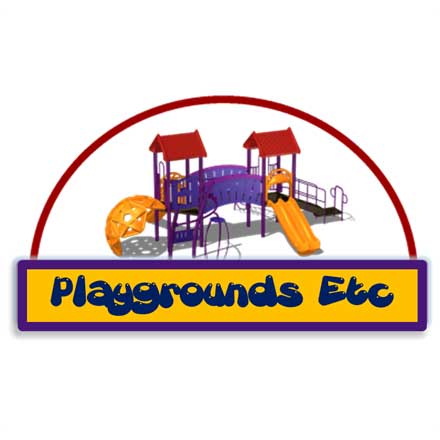Technology in playground equipment is shifting. For decades, structures were designed and manufactured using steel, plastic, or even wood. Those of us in the Millennial generation and older likely have fond memories (albeit maybe a few scary ones) of sky-high metal slides, two-story jungle gyms, jolting seesaws, and merry-go-rounds that challenged you to push them as fast as you could go. Since then, equipment manufacturers have modernized their design strategies to be safer and more inclusive, and exploration into new material possibilities is driving industry innovation and product differentiation.
As part of the sales team for rubber products, I’ve been fielding an increasing number of inquiries from playground equipment manufacturers interested in incorporating rubber belting into their modern architectural play structures. Not only is rubber more flexible, malleable, sturdy, and safe when compared to traditional materials, it can be used in a variety of ways. Read on to learn more about how rubber components are quickly becoming the future of playground equipment.
Why consider rubber belting for playgrounds?
Metal and plastic are rigid, which can sometimes hinder creative ideas in new projects. Designs using these materials can typically only be created at specific angles or in straight lines because of the nature of their properties. Rubber, however, is flexible, moldable and offers different textures. It flows with activity and can create different sensations through touch, all while meeting the strength requirements for its use.
Because rubber belting is flexible and easy to grip, it allows for children to do one of their favorite things – climb! It offers abrasion resistance and some forgiveness with a misstep or short fall. Designers have recognized that rubber belting has safety benefits in parts of the playground where hard surfaces have traditionally been used. Rubber also provides a key inclusive component – its adaptable nature supports playground manufacturers’ ability to design structures that are more accessible to children with a mobility or physical disability.
How can rubber be incorporated into structures?
The creative minds behind much of the new playground constructions have utilized rubber belting in many fashions. It can be used as climbing features, bridges, swings, structural guides, art, surfacing, and more. Additionally, material yield (remnants from standard belt production processes) can be shredded and used as ground cover which reduces waste. Rubber belts are built to withstand immense weight and abrasion over spans of time, and the textured surfaces do not create burn hazards in the summer sun.
Most of the interest has been for 3-ply belting because of the tensile strength over spans, however, 2-ply constructions are under investigation for use in features as well. Conveyor belt patterns such as mini rough top has been tested to deflect heat while providing some texture and grip. Belting manufacturers may have capabilities to create custom shapes, or playground equipment manufacturers may choose to purchase bulk belting and do the cutting in-house via their own technologies.
As rubber belting gains momentum in the recreation industry, observers will notice all sorts of new, never been seen before creations incorporated into structures. Designers are thinking outside of the box, making custom design requests, and using this new material to drive innovation in their industry and build a better experience for their customers and their customers’ customers – kids.
What are the benefits of using rubber belting in playground design?
The sheer strength and durability of the product sets it apart from others. These properties derive from the internal fabric layers inside the belt construction that have been engineered to withstand immense use and stress. Furthermore, the rubber compounds can be formulated to resist degradation through the coldest of winters and the hottest of summers. And because of the different textures and pattern offerings for rubber belting, it doesn’t overheat as bare metal or plastic can. Equipment manufacturers worldwide are realizing rubber belting is a unique material can endure the most inventive games that children can play.
As technologies change so do the industries in which they are used. Playground equipment designers have recognized rubber belting as a new resource that can complement steel and plastic use in structural designs. And as a representative of a rubber belting manufacturer who has been working with a few of these design teams, they are energized with new ideas and asking “what if” questions as they discover new possibilities. I’m humbled to support the innovation in this industry and the role rubber belting will “play” for playground equipment manufacturers as they produce groundbreaking, futuristic new structures that will magnify their impact on child development.
For more information about how rubber can enhance your next iteration of playground equipment, contact [email protected] to learn more.

